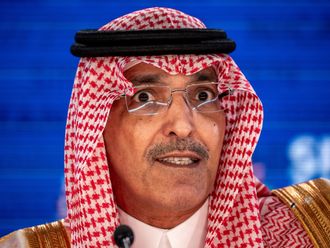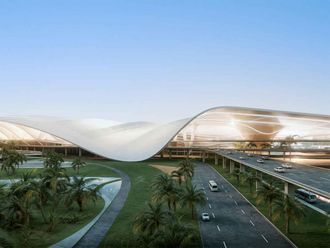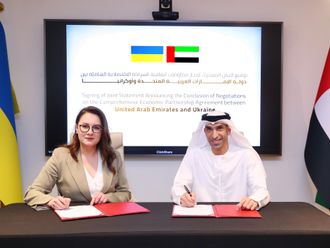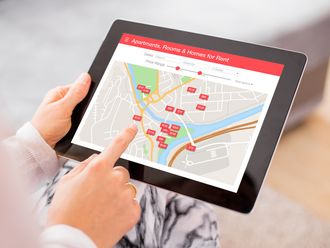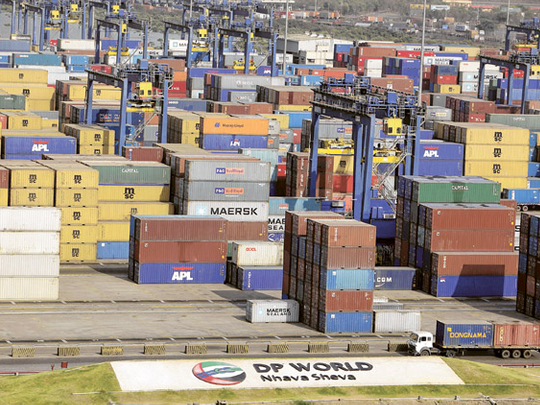
DubaI: Increased trade and business ties will be near the top of her agenda when Indian President Pratibha Devisingh Patil begins her first visit to the UAE Sunday.
India is the UAE’s leading trade partner, with China close behind. India and the UAE exchanged goods worth Dh118 billion in 2009, ousting China from the previous year’s top slot.
Patil is travelling with a contingent of Indian businesspersons and will meet business groups in Dubai and Abu Dhabi.
“Trade will certainly be a key part of the President’s visit to the UAE,” Indian Ambassador M.K. Lokesh told Gulf News.
According to Indian figures, the UAE was the second-largest exporter to the sub-continent after Saudi Arabia last year, with shipments totalling about Dh62.44 billion.
The UAE’s imports from India rose to a record 10.8 per cent of that country’s total exports of nearly $153 billion.
The UAE’s economic, political and cultural links with India, which date back more than a century, are mature and multi-dimensional. Trade has been steadily growing over the years and people-to-people contacts are constantly increasing.
Indians comprise the largest expatriate community in the UAE, numbering about two million. Remittances to India from the UAE in 2008-09 were about $12 billion, accounting for a third of all money sent to India from the GCC countries.
“The UAE visit of President Patil signifies a major step for India to strengthen its bilateral ties with key economies in the Middle East,” said Rizwan Sajan, Chairman of Danube Building Materials.
“Her visit not only reflects the strong relationship that both countries have with each other but also shows the eagerness to reinforce this relationship by creating more opportunities that will benefit both the UAE and India in the long term.
“India’s move to create stronger business relations and improve trade ties with countries like the UAE underlines its dedication to creating and developing a new India — one that is able and ready to do business with the global market,” he said.
Indian and UAE companies are actively involved in pursuing investments and projects in both countries.
These joint ventures involve some of the most important Indian companies such as Tata, Reliance, Wipro, Mahindra & Mahindra, NTPC, Larsen & Toubro, Dodsals and Punj Lloyd.
From the UAE side, the top companies active in India include Emaar Properties, Nakheel, DP World, ETA Star, Damas and Abu Dhabi Commercial Bank.
Direct investment
The UAE companies and others have invested more than $5 billion in India through foreign direct and institutional investment, making the UAE one of the top investors there.
“India’s exports to the UAE have seen multifold growth; major exports are traditional items like tea, rice, leather goods, coffee, marine products and meat,” said Kamal Vachani, Director of the Al Maya Group and Regional Director, Electronics and Computer Software Export Promotion Council (ESC) for the Middle East.
“Exports of consumer electronics, hardware and software and IT services to the Middle East have also increased substantially, crossing the $1 billion mark.
“The UAE is a commercial and business hub of the Arab world and is the third major re-export centre in the world.
“Thus the UAE market is important for India for the opportunities and re-export market. The visit of President Patil will further boost the relationship and cooperation between India and the UAE,” Vachani told Gulf News.
Patil will spend two days in Abu Dhabi before going on to Dubai and Sharjah. She will also visit the Abu Dhabi and Dubai chambers of commerce.
The business delegation accompanying her includes members of the Federation of Indian Chambers of Commerce and Industry, the Confederation of Indian Industry and the Associated Chambers of Commerce and Industry of India.
Patil will leave the UAE for Syria on November 26.
Do you think her visit is significant? What changes would you like to see to make non-resident Indians' lives easier?



